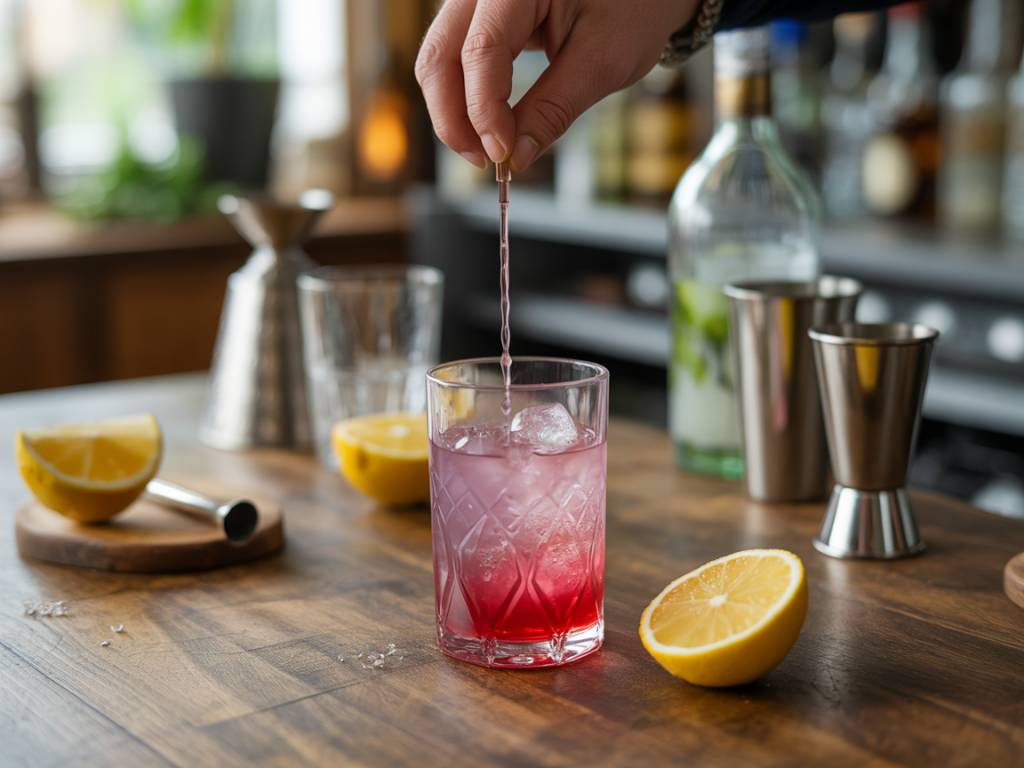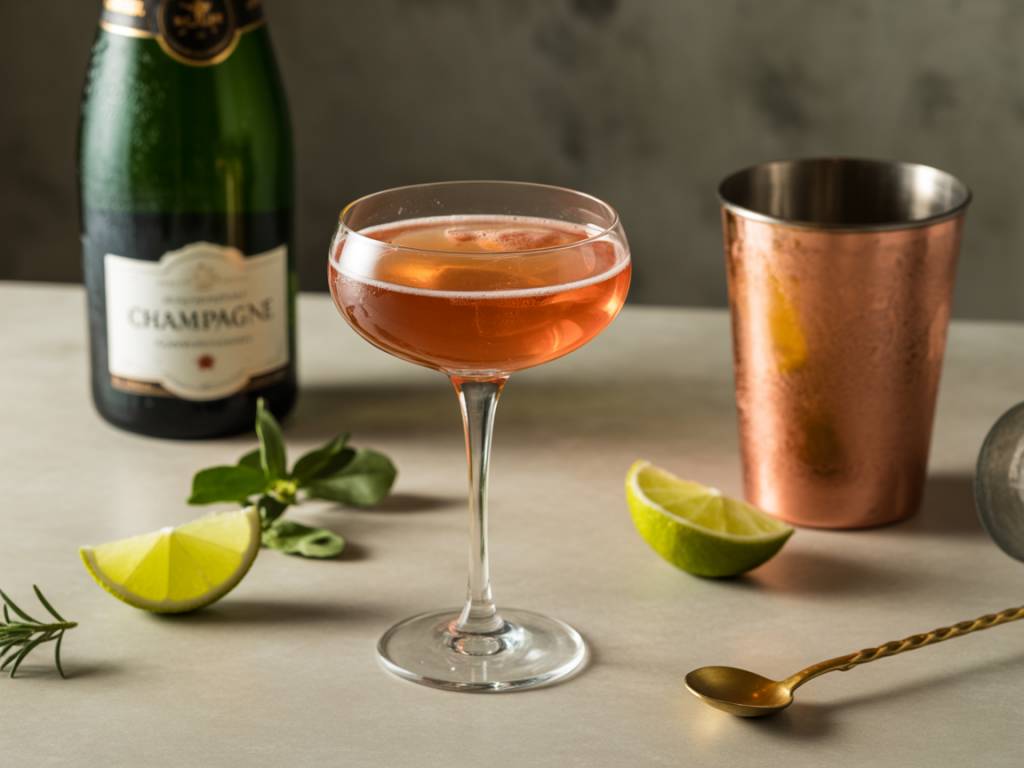What Is Molecular Mixology and Why Is It Trending in Georgia?
In recent years, the world of cocktails has been evolving rapidly. Fueled by creativity, scientific precision, and a desire for unique sensory experiences, a trend known as molecular mixology is making waves—not just in upscale bars in New York or Tokyo, but increasingly here in Georgia as well.
Molecular mixology applies the techniques of molecular gastronomy to mix drinks. Rather than simply shaking or stirring, bartenders (or inspired home enthusiasts) now use tools like syringes, siphons, smoking guns, and liquid nitrogen to transform the way we interact with beverages.
So why is this relevant in Georgia? Our capital, Tbilisi, is already home to a number of concept bars experimenting with these techniques. And with a growing interest in home entertaining—and easy access to online tools—creating futuristic drinks in your own kitchen is more achievable than ever.
Essential Tools to Start Molecular Mixology at Home
You don’t need a professional bar lab to get started. Many tools once exclusive to commercial kitchens are now available to enthusiastic amateurs. Here’s what you’ll need to begin crafting futuristic cocktails:
- Siphon (Whipped Cream Dispenser): Ideal for creating foams, infusions, and rapid carbonations.
- Digital Scale (precision to 0.01 g): Accurate measurement is essential in molecular processes.
- Pipettes and Spoons: For delicate plating and layering of ingredients.
- Syringes: Useful for injecting flavors or precise ingredient control.
- Molecular Additives: Agar-agar, lecithin, xanthan gum, sodium alginate, and calcium lactate are among the most used.
These tools are available online, and local suppliers in Tbilisi often carry kits designed for beginners. You can also find workshops offered by bartenders at bars like Stamba or Kokhta to get hands-on experience with these gadgets.
Understanding the Key Techniques
Molecular mixology isn’t about gimmicks—it’s about chemistry transforming experience. Below are the most common—and impactful—techniques that you can try at home:
Spherification
This involves turning liquids into gel-like spheres that burst in your mouth. Think of a mojito bursting like caviar on your tongue. The method uses sodium alginate and calcium lactate, commonly found in grocery stores or online.
Foams and Airs
Perfect for topping drinks with intensely flavored, airy layers—lemon grass foam atop a gin and tonic, for instance. You’ll need lecithin and a hand blender or siphon. This technique adds aroma and texture without diluting the drink.
Gelification
Gels can turn classic cocktails into solid forms—a Negroni, for example, turned into a jelly cube. Agar-agar is your main asset here and is readily available in Georgian health food stores.
Flash Infusions
Using a siphon, spirits can absorb the flavors of herbs or spices within seconds instead of days. Imagine instantly creating a cinnamon-infused chacha or basil-enhanced vodka.
Smoke and Aroma Play
Using a smoke gun or aromatic spritzers, you can add a dramatic flair (and flavor) to your drinks. A smoked old-fashioned or a rosemary-scented wine spritz aren’t beyond your reach, even in a small Georgian kitchen.
Ingredients You Likely Already Have
While some ingredients sound high-tech, you’ll be surprised to discover many accessible alternatives already present in Georgian pantries:
- Corn starch or gelatin: Makes an easy substitute for gelling agents.
- Lemon juice: Useful in balancing acidity during spherification.
- Fresh herbs: Widely used in Georgian cuisine, ideal for rapid infusions.
- Honey and wine: Both traditional and experimental in modern drink creations.
The Georgian culinary scene already values bold flavors—integrating molecular elements respects this tradition while elevating presentation and creativity.
Three Molecular Cocktail Recipes You Can Try at Home
The following drinks are beginner-friendly, require only minimal equipment and ingredients, and are aligned with local tastes.
1. “Tbilisi Sunset” – Layered Wine and Citrus Sphere
Ingredients:
- Red Saperavi wine
- Fresh orange juice
- Sodium alginate and calcium lactate
Method:
Mix orange juice with sodium alginate and drop into a bath containing water and calcium lactate. After a minute, a small citrus sphere forms. Serve it in a shot glass and pour gently a layer of Saperavi over. Pop the sphere in your mouth to begin the experience.
2. “Georgian Garden” – Herbal Foam on Gin Base
Ingredients:
- Gin
- Cucumber juice
- Basil or mint
- Soy lecithin
Method:
Blend the herbs and cucumber juice with lecithin until foam appears. Pour a shot of gin over ice and gently spoon the foam on top. It’s vibrant, fresh, and uniquely Georgian.
3. “Chacha Cloud” – Aromatic Smoked Cocktail
Ingredients:
- Chacha (the stronger, the better)
- Lavender or wine barrel chips
- Optional: Honey syrup
Method:
Use a hand smoker to infuse your glass with lavender wood smoke. Pour chacha over ice and add honey syrup if desired. Capture the smoke under a dome or cover. Release with a flourish at serving. A dramatic take on our classic spirit.
Safety First: Managing Risks in Molecular Mixology
As fun as molecular mixology sounds, handling chemicals or extreme temperatures requires caution. Here are some key safety reminders:
- Always work in a well-ventilated kitchen, especially when using dry ice or smoking guns.
- Use food-grade chemicals from verified suppliers. Avoid industrial-grade versions, even if they seem cheaper.
- Store additives in labeled containers, away from children and pets.
Think of it like baking—precise, rewarding, and better when the recipe is followed to the gram.
Where to Learn More in Georgia
Interested in diving deeper? Georgia’s growing cocktail scene includes several locations where you can witness or even join in on molecular mixology:
- 41° Cocktail Bar (Tbilisi): Known for offering experimental cocktails with modern techniques.
- Barbarestan Events: Occasionally hosts workshops on avant-garde cuisine and beverages.
- Adjara Group properties: Including Stamba, where bartenders integrate molecular twists into their tasting menus.
There’s also a growing online community of Georgian mixologists and food artists sharing tips and tutorials—Instagram and YouTube being especially vibrant platforms.
Why Now Is the Right Time to Try This at Home
With travels restricted in recent years, and home gatherings becoming more intimate, Georgians have rediscovered the joy of home entertaining. Experimenting with drinks is a perfect extension of this. Moreover, our rich culinary heritage pairs beautifully with the experimental mindset of molecular mixology.
So, next time you’re hosting guests or just looking to surprise your taste buds, why not replace the usual wine pour with a citrus-foam infused spritzer? Or serve your homemade tarragon chacha inside a smoke bubble?
The future of cocktails isn’t just in trendy bars—it’s in your kitchen. And for those ready to bridge tradition with innovation, molecular mixology offers an exciting, tangible path forward.



